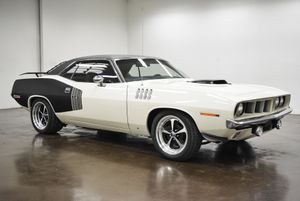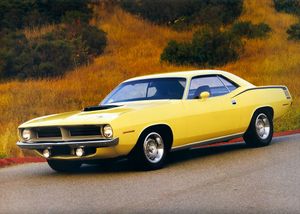The Chevy Camaro was built to rival the Ford Mustang.
The Chevy Camaro was built to rival the Ford Mustang.
Built under the General Motors umbrella, the rear-wheel-drive Chevrolet Camaro is a mid-size vehicle that was created to compete against the Ford Mustang. Introduced for the 1967 year, sales for this new model started on September 29th, 1966, as the car sprinkled its way into dealerships. Depending on the version, the Camaro can fall in either the pony car or muscle car category. Sharing the F-body platform as the Pontiac Firebird - a car that also made its grand debut for the 1967 model year - the two sister models shared many components.
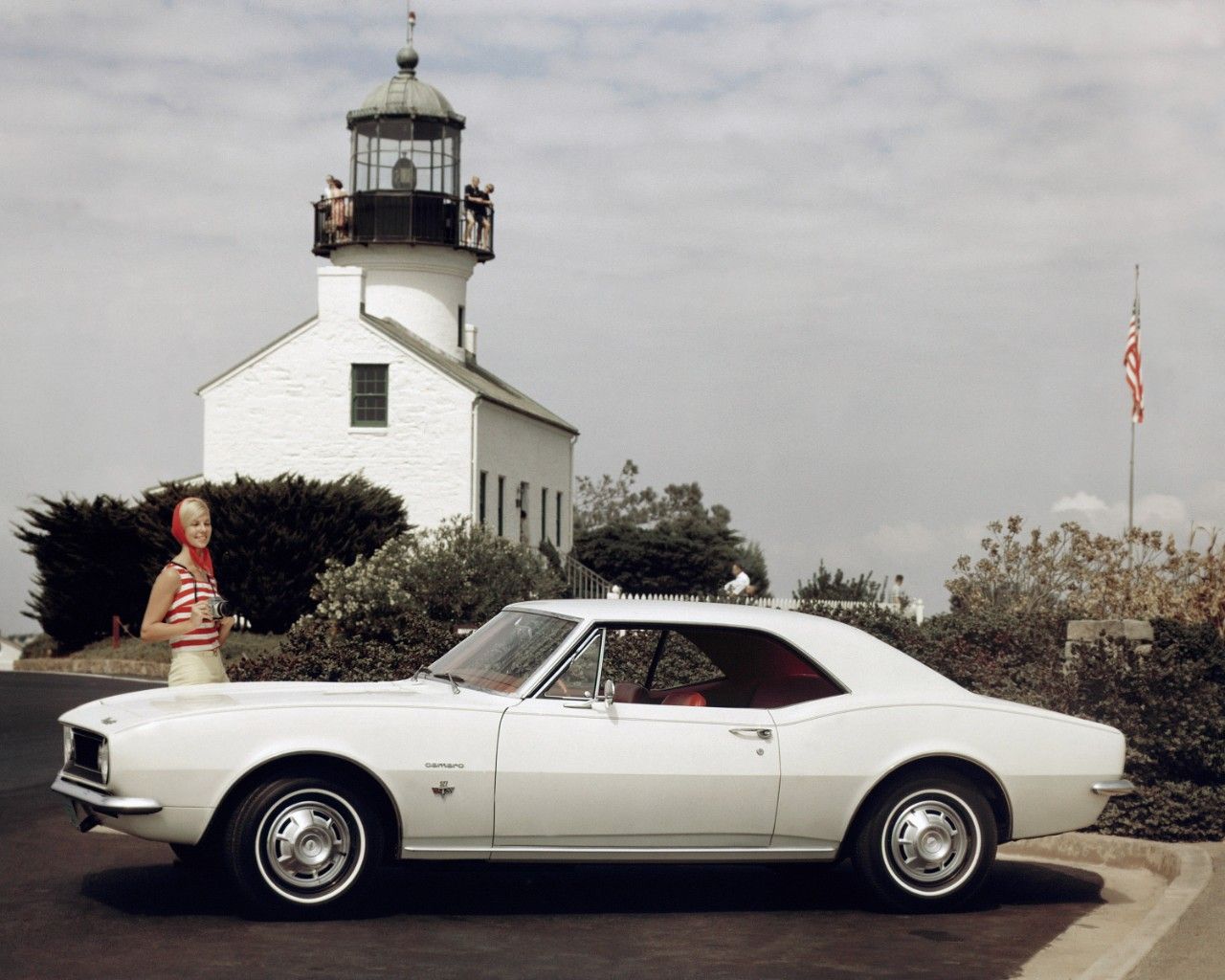
The Chevy Camaro was built for a total of six generations, four of those were before a brief hiatus when production ceased from 2003 through 2009. The fifth-generation Camaro returned with a vengeance when the moniker was revived for the 2010 model year with production beginning on March 16th, 2009. Chevrolet has sold more than 5 million Camaros.
Generations
First-Generation (1967 - 1969)
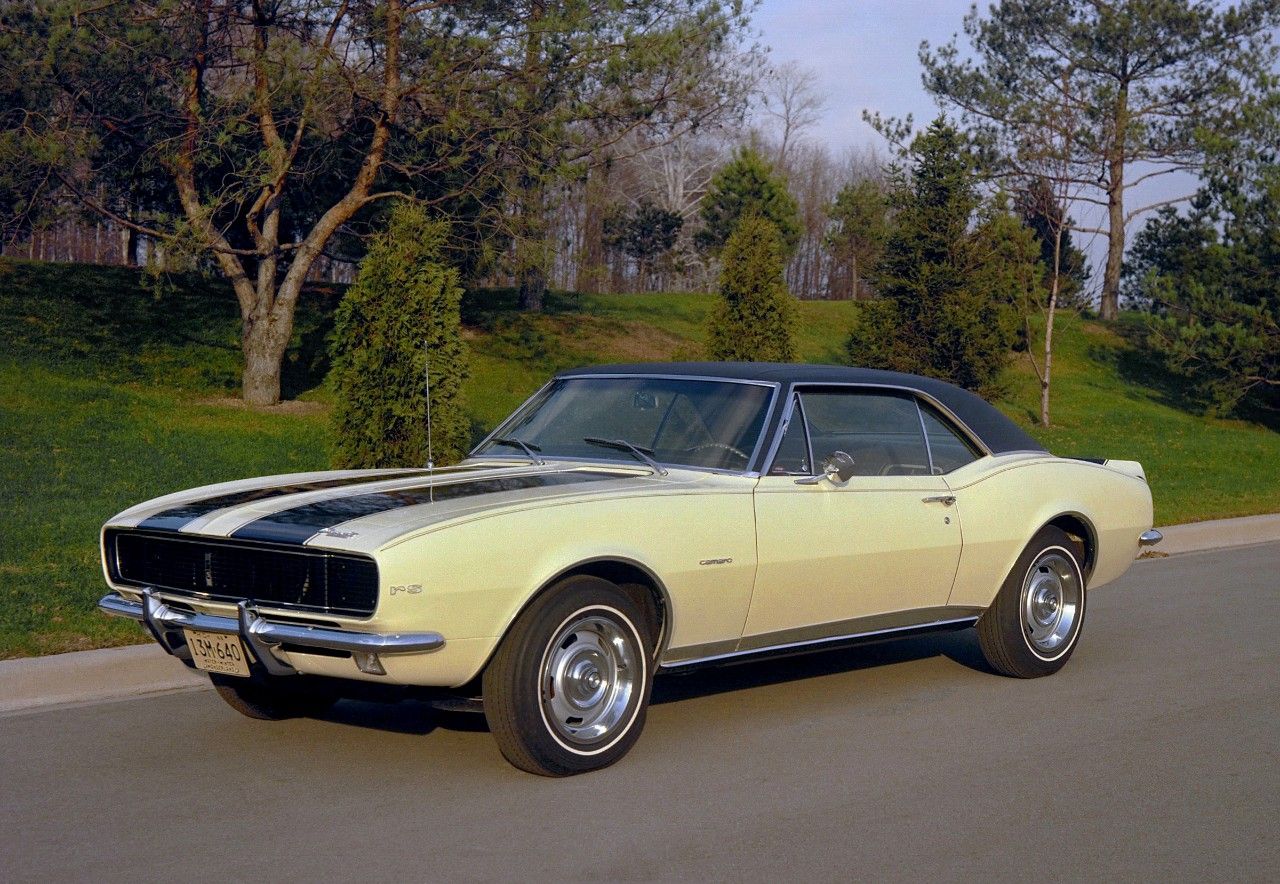
Designed to compete head-to-head against the Ford Mustang, the first-generation Chevrolet Camaro was born after GM executives realized that the rear-engine Corvair could never top sales of Ford's pony car. Plus, sales were declining on the Corvair, and the book Unsafe at Any Speed by Ralph Nader shined the car in a negative light.
Featuring rear-wheel-drive and 2+2 seating, the 1967 Camaro was offered in both hardtop (with no "B" or center pillar) and convertible versions. Even more, the Camaro featured an abundance of power options including a 230-cubic-inch six-cylinder (3.8-liter); 250ci (4.1-liter) inline-six; 302ci (4.9-liter); 307ci (5.0-liter), 327ci (5.4-liter), 350ci (5.7-liter), and 396ci (6.5-liter) V8 powerplants.
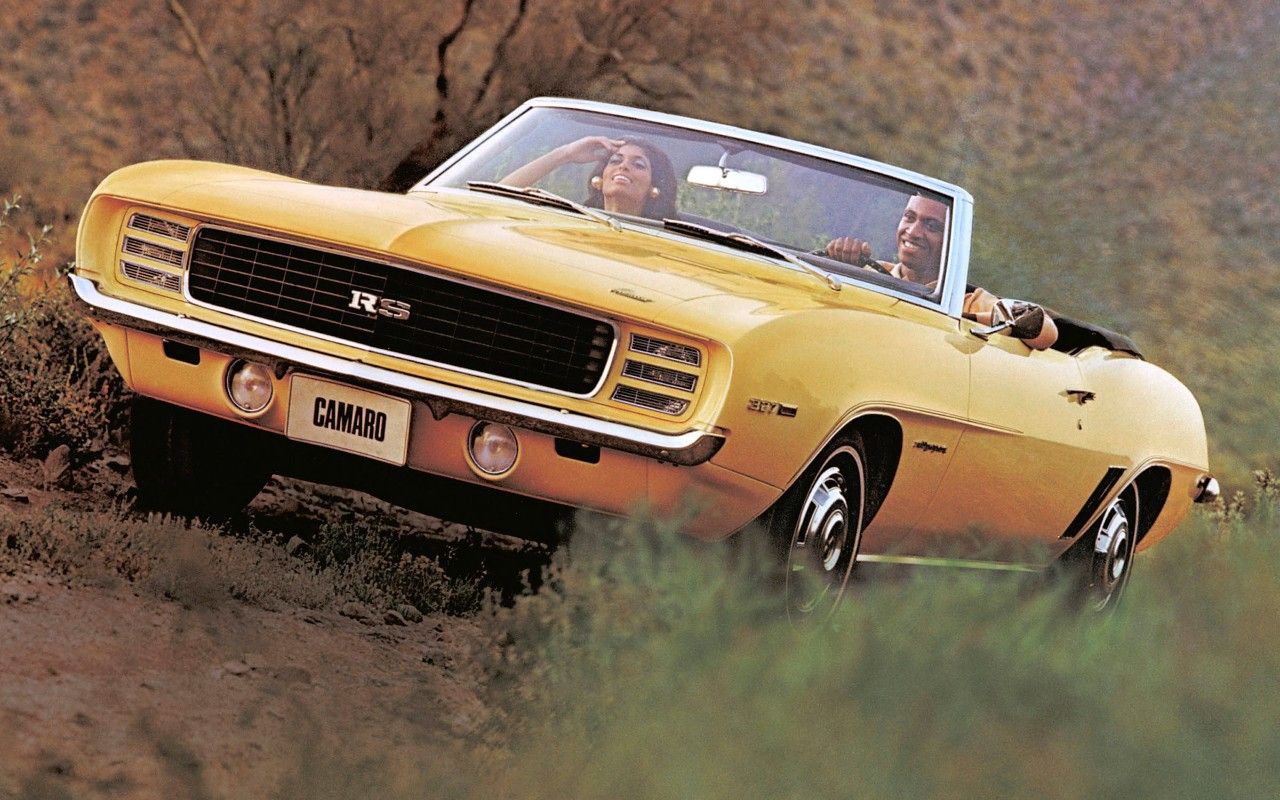
Built through the 1969 model year, the first-generation Camaro was available in standard, Super Sport, and Rally Sport versions. For the debut '67 model year, Chevy also introduced the high-performance Z28 adorned with stripes topping the hood and trunk, rally road wheels, and a 302-cubic-inch V8 engine stuffed under the hood. The Rally Sport (RS) mostly defined the style of the Camaro with hideaway headlights, wing windows, and a rounder rear fender. For the 1968 Camaro, side marker lights were introduced, and the 1969 model year no longer featured wing windows and was given a flatter rear fender.
Two U.S. assembly plants can be credited for building the first-generation Camaro with locations in Norwood, Ohio, and Van Nuys, California. Five other plants located outside of the United States required local Camaro assembly in Switzerland, Peru, Venezuela, Belgium, and the Philippines.
Second-Generation (1970 - 1981)
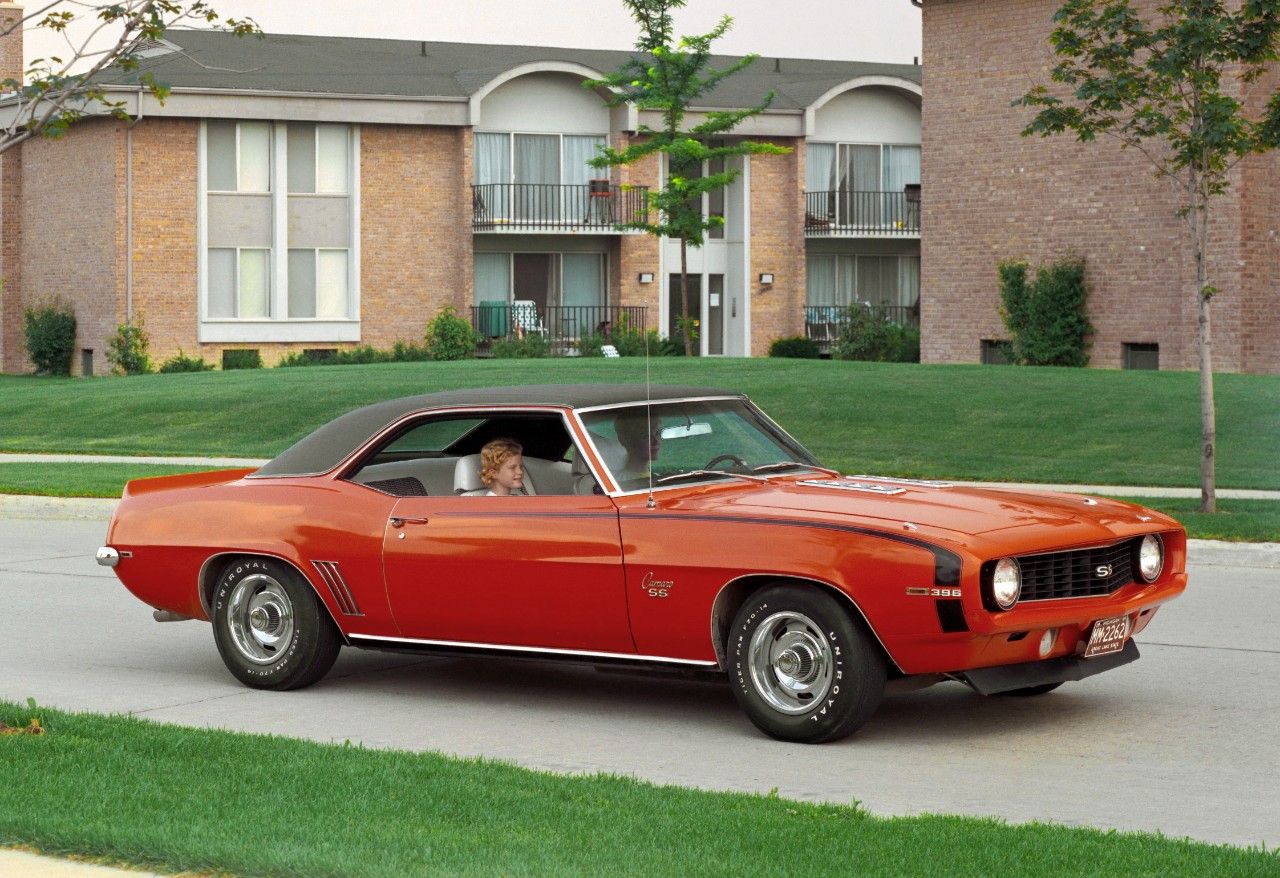
The second-generation Chevrolet Camaro was introduced in February 1970 and continued for 11 years through the 1981 model year. With some aesthetic changes given to the 1974 and 1978 model years, the Camaro still sat atop the F-body platform and was given a major makeover along with being considerably bigger and wider. Still resembling the first-generation, the Camaro still featured a solid axle with a unibody structure, front subframe, A-arm front suspension, and leaf springs.
In the August 1971 issue of Road & Track magazine, they included the '71 Camaro SS350 in their list of the top ten "Best Cars In The World". The RS and SS trim packages were discontinued for the 1972 Camaro but reappeared decades later for the 1996 model year.
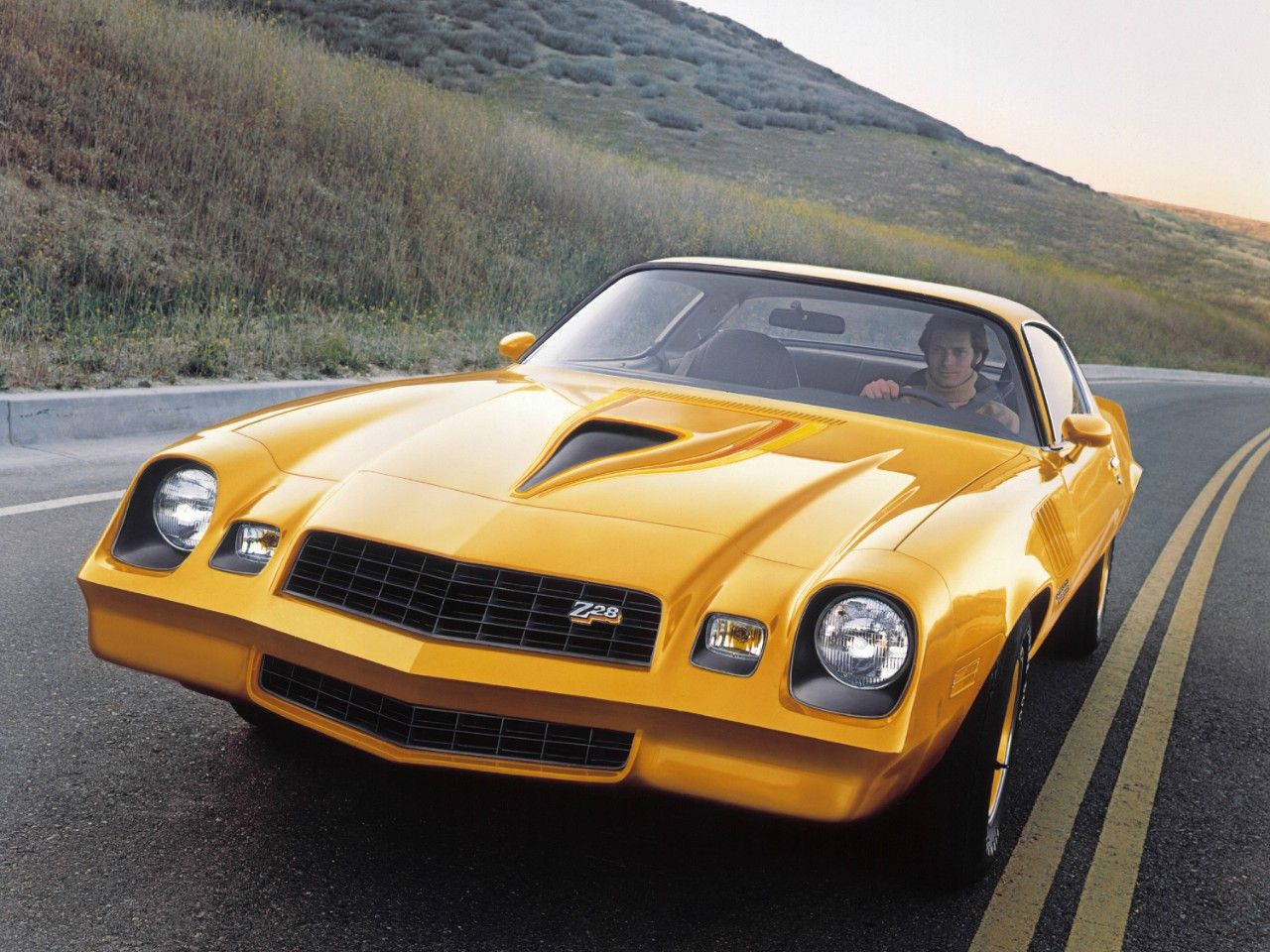
For the 1980 and 1981 models, the Chevy Camaro Z28 featured a functional hood scoop. At full throttle, the intake door would open and force fresh air into the engine bay.
Third-Generation (1982 - 1992)
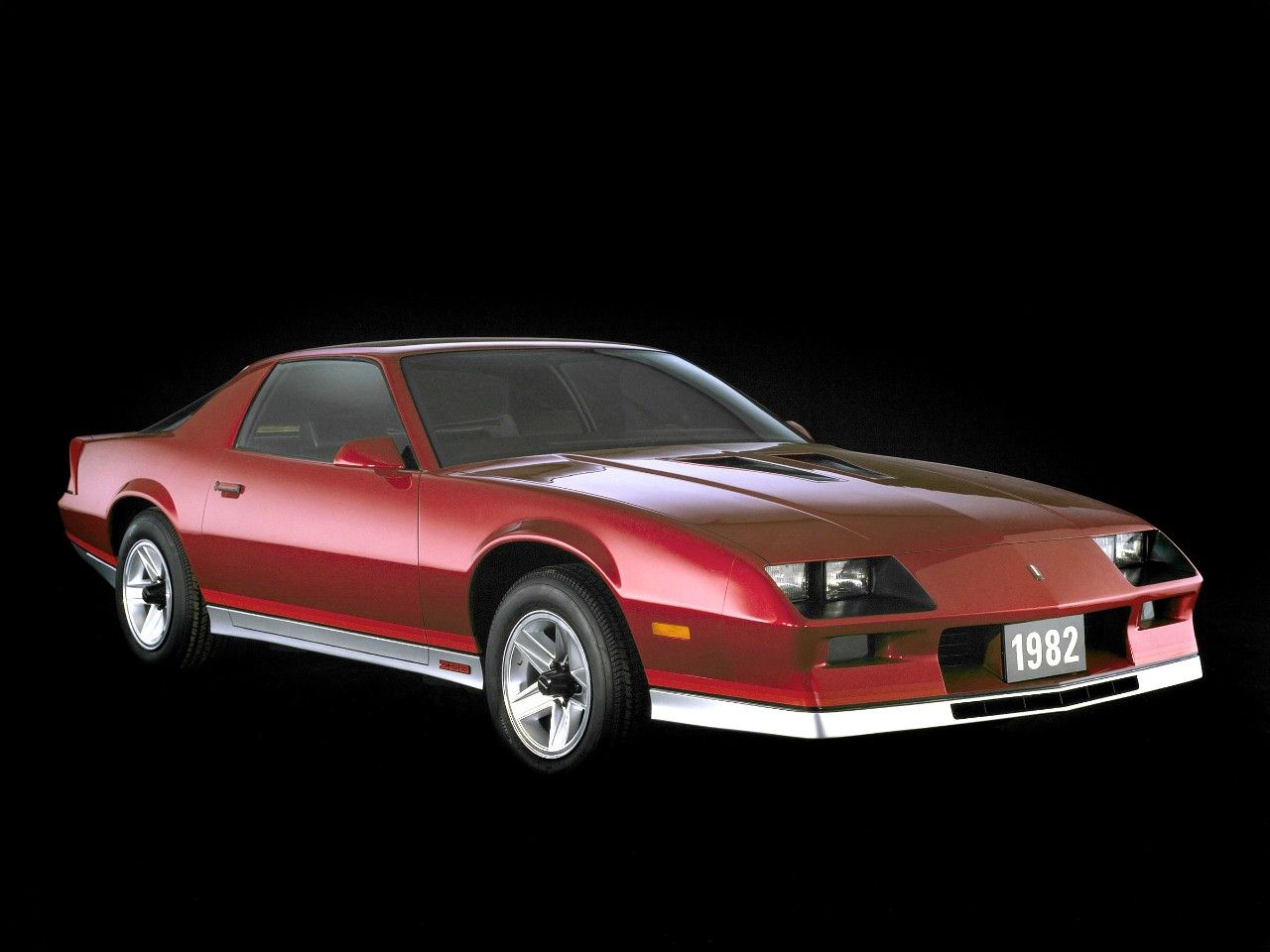
The third-generation Chevrolet Camaro was produced for a full decade from 1982 through 1992. This became the first time that the Camaro was offered with modern fuel injection. Available as a hatchback, the car was approximately 500 pounds lighter that its first-generation predecessor. Shifting came in the form of a Turbo-Hydramatic 700R4 four-speed automatic or a 5-speed manual transmission. Even more, OHV four-cylinder engine became standard. Wheels were available from 14- to 16-inches.
In 1985, the high-performance IROC-Z model was introduced and continued through the 1990 model year. For the 1986 model, regulations by the National Highway Traffic Administration (NHTSA) enforced a CHMSL (Center High Mounted Stop Lamp), which was located at the exterior top upper center of the hatch glass. One could distinguish a 1987 or newer model with the CHMSL inside the upper hatch glass or as part of the rear spoiler (if available).
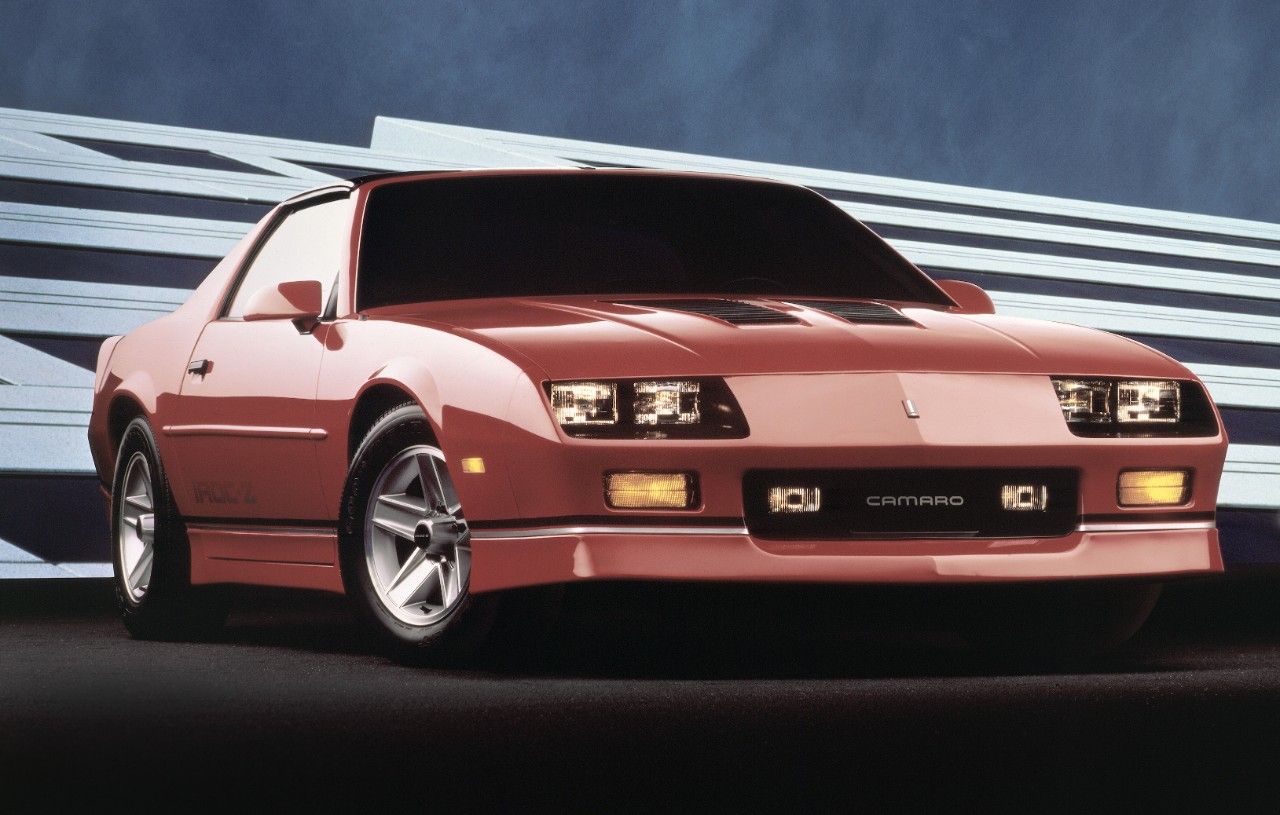
GM discontinued the 2.5-liter Iron Duke pushrod 4-cylinder engine and made the 2.8-liter V6 (OHV) engine the standard for all base models. For the 1985 model year, Chevrolet introduced indirect injection, or "tuned port injection" (TPI) for the 305-cubic-inch (5.0-liter) small-block V8 engine.
For the 1987 model, the IROC-Z was powered by an L98 350-cubic-inch (5.7-liter) V8 engine as a regular option, and it was backed by an automatic transmission. For the first time since 1967, the convertible came back for the 1987 model year with each one equipped with leather map pockets scribed with "20th Commemorative Edition". (For the 1992 model year, the "25th Anniversary Heritage Package" featured a unique spoiler plaque and stripes.)
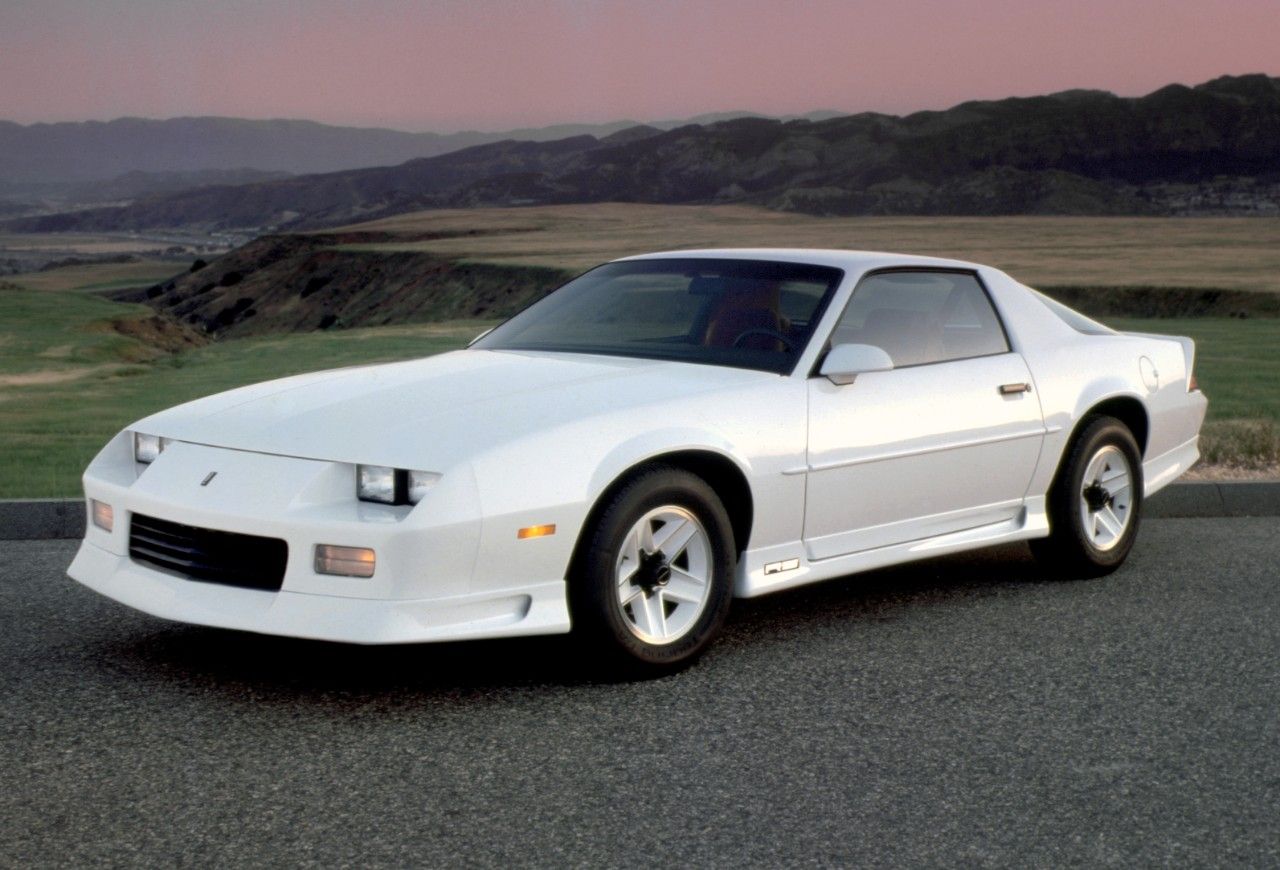
The 1988 model could be upgraded with the optional 1LE Performance Package on street trim, and it was also available for showroom stock racing in both Canada and the United States. Starting in 1991, a "police" package, or B4C, could be added to the Camaro which allowed for more of a toned-down RS style for the high-performance Z28.
Fourth-Generation (1993 – 2002)
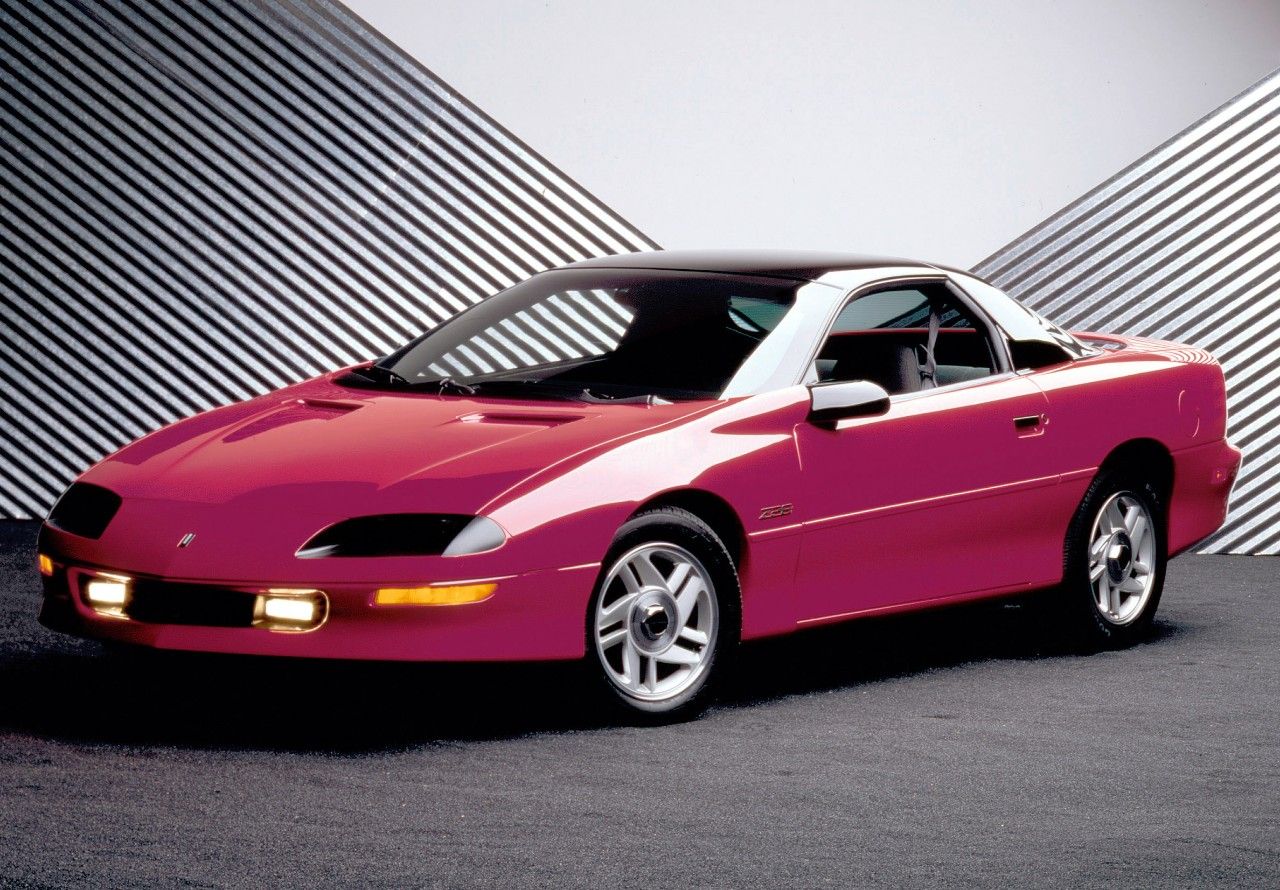
The 1993 model year kicked off the first year of the fourth-generation Chevrolet Camaro, and the car now sat on an updated F-body platform. With features reminiscent of the first 1967 model, the car was available in coupe or convertible versions, had 2+2 seating, and could be powered by either the beefy V8 or pushrod V6 engine. T-tops were also optional.
For the fourth-generation, two versions of the V6 engine came standard with the 3.4-liter powering models 1993 through 1995, and the 3.8-liter V6 was stuffed inside the 1995 model year. Standard in the Z28 was the 350-cubic-inch MPFI (LT1) small-block V9 engine that debuted in 1992, and was shifted via the standard 4L60E 4-speed automatic transmission. A 6-speed T-56 manual transmission was introduced along with all-speed traction control as optional equipment. The V6-powered models could be powered by the automatic found in the Z28 or could be shifted via the standard 5-speed manual.
For 1996 and 1997, a handful of SS models were stuffed with the LT4 small-block V8 engine found in the Corvette which made 330-horsepower, but the majority came with the 275-horsepower LT1 V8 engine.
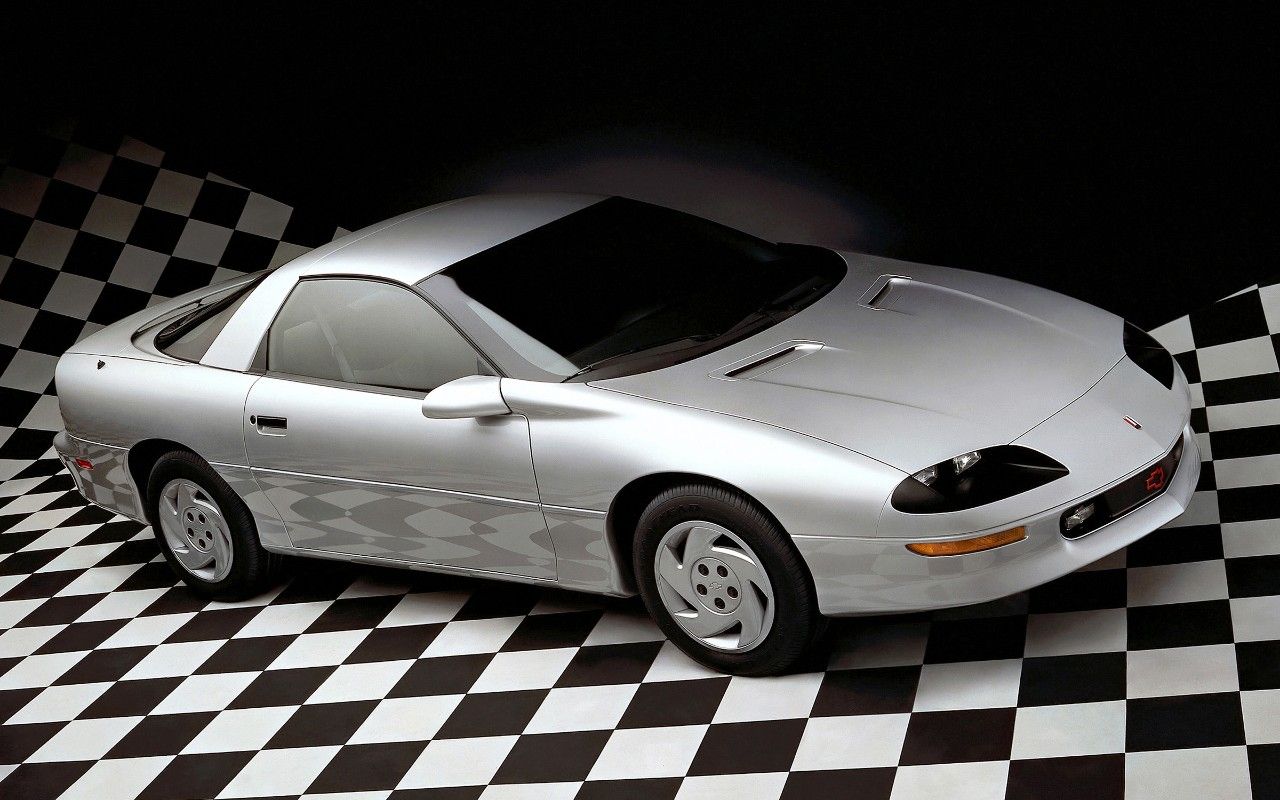
In 1997, interior revisions were made, and in 1998, style changes were given to the exterior. The aluminum block LS1 powered by the Corvette C5 was introduced to the Camaro lineup in 1998, the first use of an all-aluminum engine since the 1969 ZL1, and this version had an output of 305-horsepower. From 1998 through 2002, the Camaro SS was had an updated intake system, exhaust, a tweaked suspension, a rear wing, different sized gears, and larger wheels and tires.
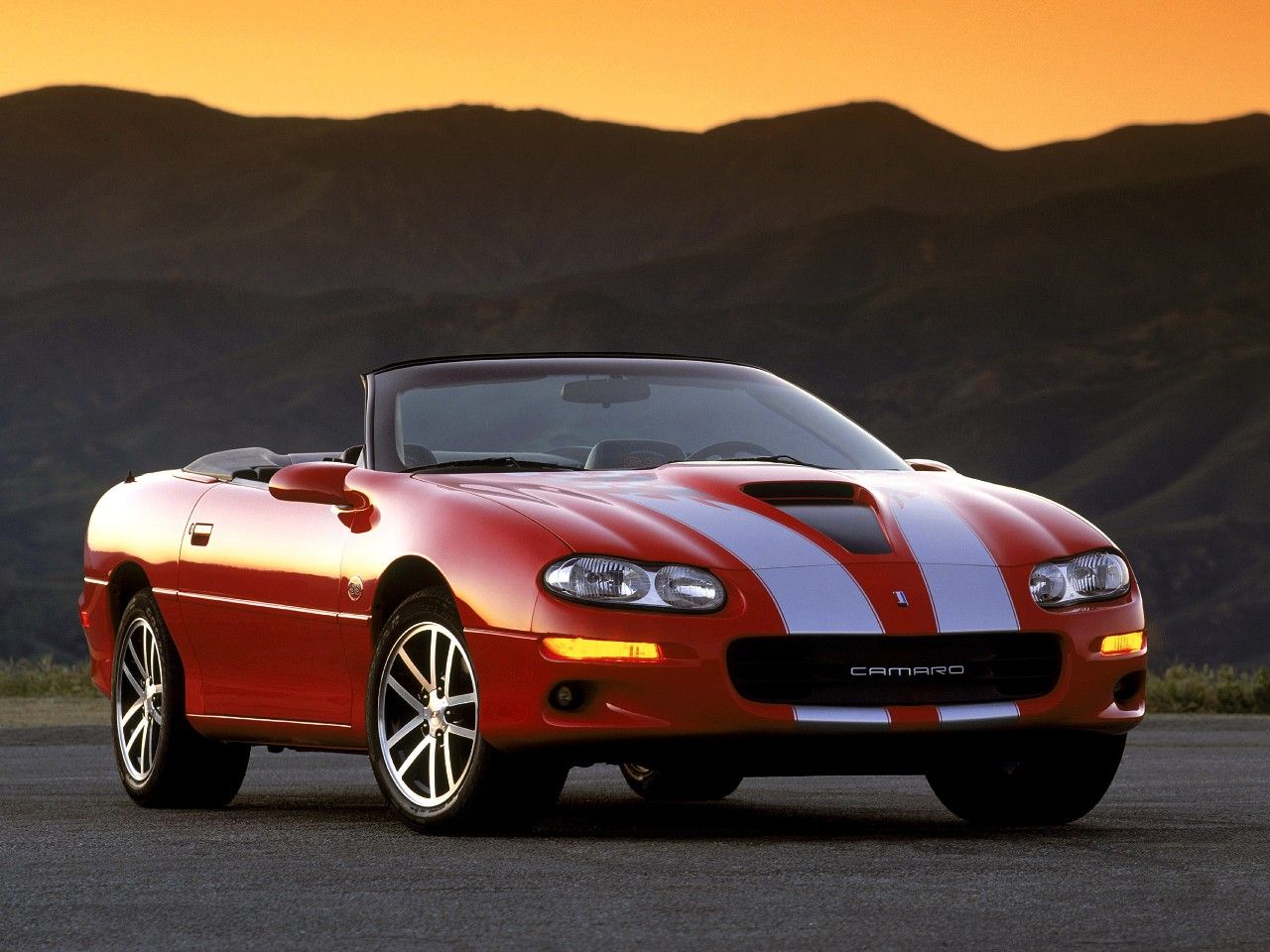
For 2002, Chevrolet introduced a 35th anniversary edition. Due to sales decreasing and other reasons, the F-body was terminated as a new platform would debut for 2009. The B4C Special Service Package for police cars continued to be sold from 1993 through 2002.
Fifth-Generation (2010 - 2015)
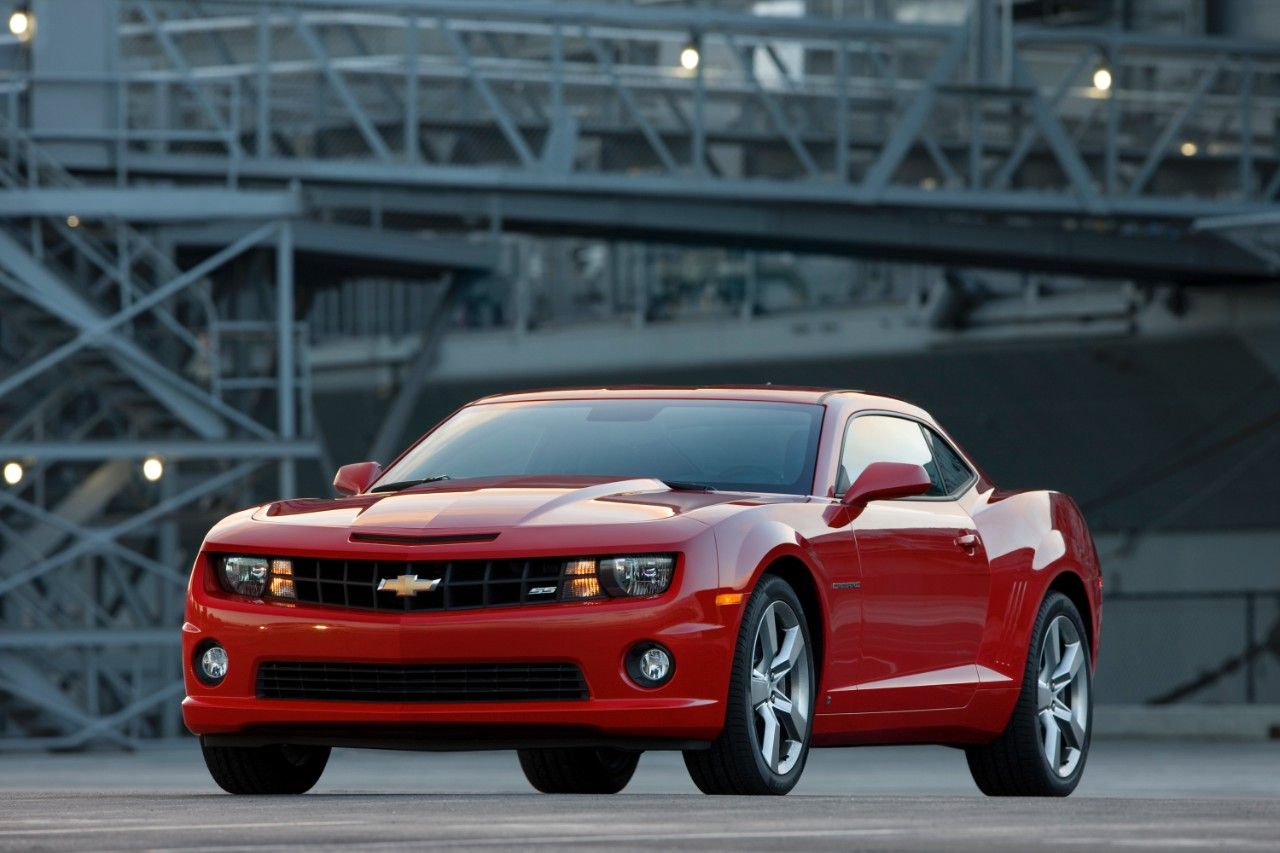
After a brief hiatus, the fifth-generation Camaro came back strong with a whole new platform and body makeover. This car was based on the 2006 Camaro Concept and 2007 Camaro Convertible Concept cars, and the 2010 model year went on sale in spring of 2009 with cars produced at the Oshawa Car Assembly plant in Ontario. The fifth-generation was a hit, and the Camaro was given the World Car Design of the Year at the World Car of the Year Awards on April 1st. 2010.
Australia's GM Holden is credited with the final design, engineering, and development of this all-new Camaro, after the development of Zeta architecture. The LS and LT models were powered by the 3.6-liter V6 engine (220ci) good for 312-horsepower in the 2010 and 2011 models that could be shifted via a 6-speed auto with manual shift or regular 6-speed manual transmission. and the high-performance SS was powered by the 6.2-liter (376ci) LS3 V8 engine with an output of 426-horsepower shifted by a 6-speed manual transmission, and the SS automatic was powered by the L99 V8 engine good for 400-horsepower. Both the LT and SS featured the RS appearance package with dark gray 20-inch wheels, xenon headlamps with halo rings, a special spoiler, and red RS or SS badging.
Production of the 2011 model Camaro convertible started in January that same year, and the very first (#001) was purchased at Barrett-Jackson by Rick Hendrick, who is known for purchasing the very first model when it comes to Camaros and Corvettes. Available with the same exact options as the Camaro coupe, the convertible version was available in all trims and with any powerplant offered at the time. Convertibles were given an aluminum brace installed over the engine and under the transmission. Also, certain colors were not available due to the 2011 Fukushima earthquake causing lack of pigments.
After a two-year delay (with domestic demand to blame), an export version (not including Japanese version) was introduced in November 2011. This version featured unique tail lamps with turn signals and reverse, larger rear view mirrors on the outside with integrated turn signals, and other changes.
For 2012, a commemorative 45th anniversary model was built and finished in Carbon Flash Metallic, although not continuous throughout the entire period. Other highlights of the anniversary edition included exclusive 20-inch wheels, unique stripe package, and interior stitching in red, white, and blue. For power, an updated version of the 3.6-liter "LFX" V6 engine was available and made 323-horsepower, and suspension upgrades were given to the SS model. All Camaro models were given an RS spoiler and taillight decals, Bluetooth connectivity controls, and volume and radio controls on the steering wheel.
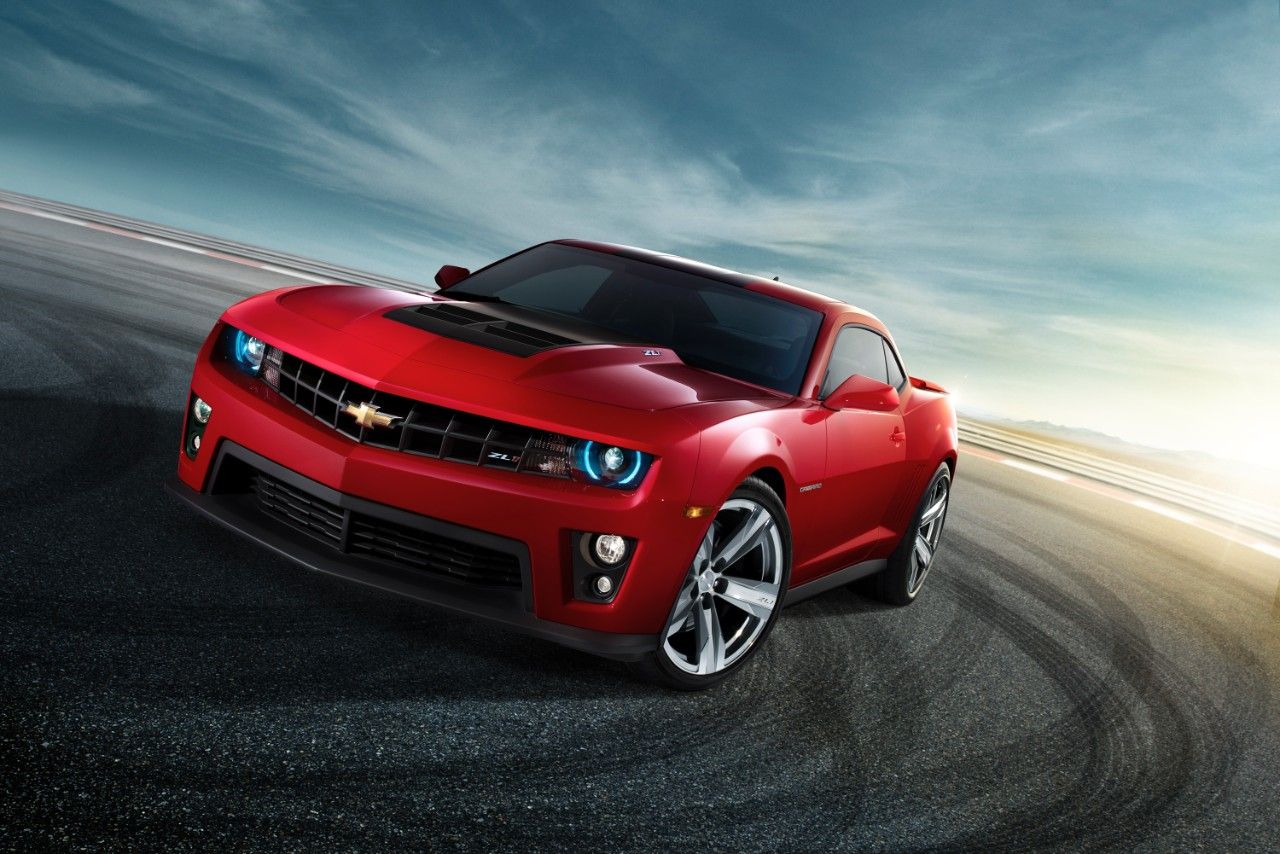
For 2012, the ZL1 was powered by a supercharged 6.2-liter LSA V8 engine that produced a staggering 580-horsepower, an engine first stuffed inside the 2009 Cadillac CTS-V. More highlights include exclusive aluminum 20-inch wheels, a 2-stage exhaust, and suede seats, steering wheel, and shift knob.
For the 2012 model year, Chevrolet built a 2LS model (alongside the LS) with a different rear axle ratio (2.92) which allowed for better gas mileage (19/30 mpg) - the main goal for this new model. Powered by the V6, drivers could hit 7,200-rpm for the first time which allowed for the car to perform better than ever. Also, the new 2LS model offered plenty of rear spoiler options.
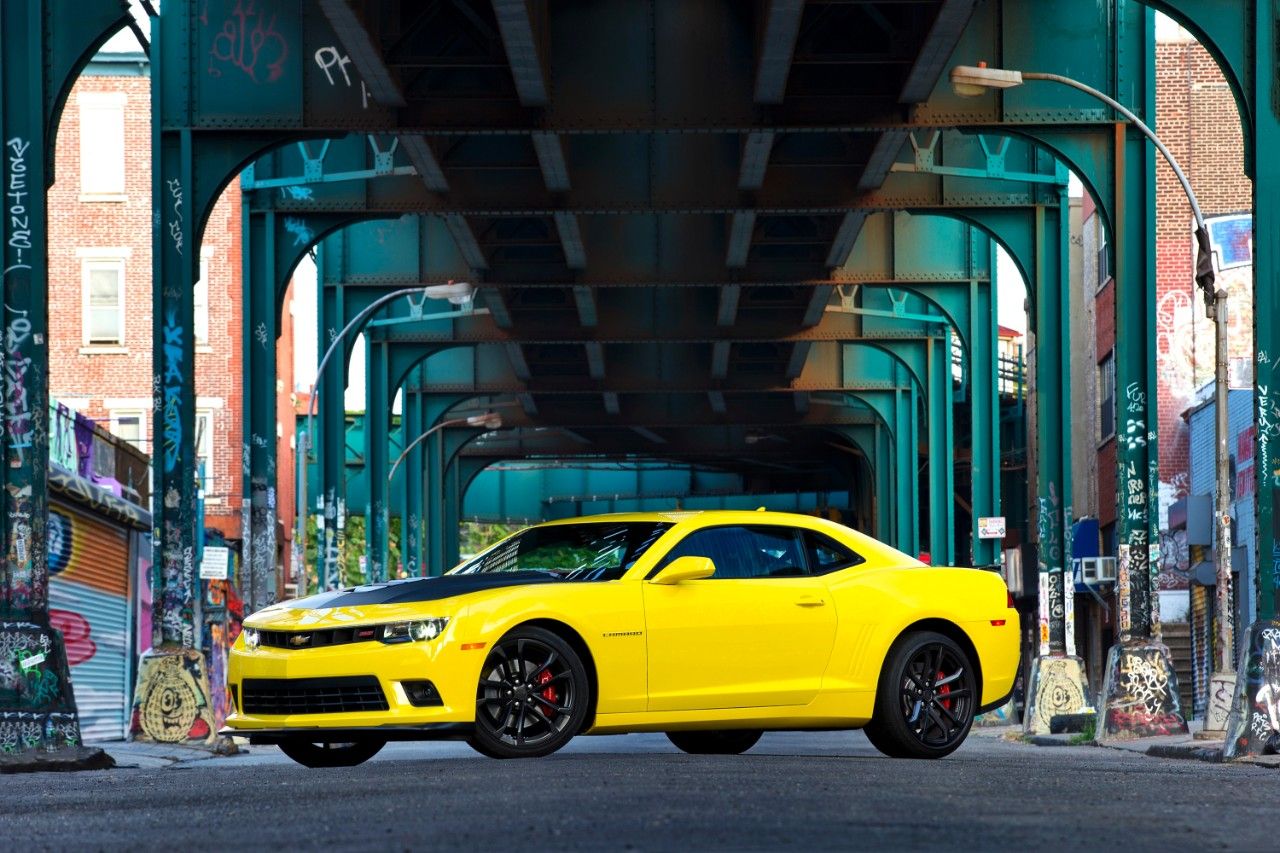
For 2014, the Camaro was given a cosmetic makeover including a bigger lower fascia, new fog lights, taillights reminiscent of the original car, and a thinner grille. Also, the Z28 model returned, and it was powered by a powerful 7.0-liter LS7 V8 engine capable of 505-horsepower which is the same engine utilized by the Z06 Corvette (C6). As usual, air conditioning was optional, and weight reduction attempts included given thinner rear quarter glass and rear seats, and removal of most of the sound deadening. An RS appearance package featured LEDs in both the taillights and headlights.
Sixth-Generation (2016 - Present)
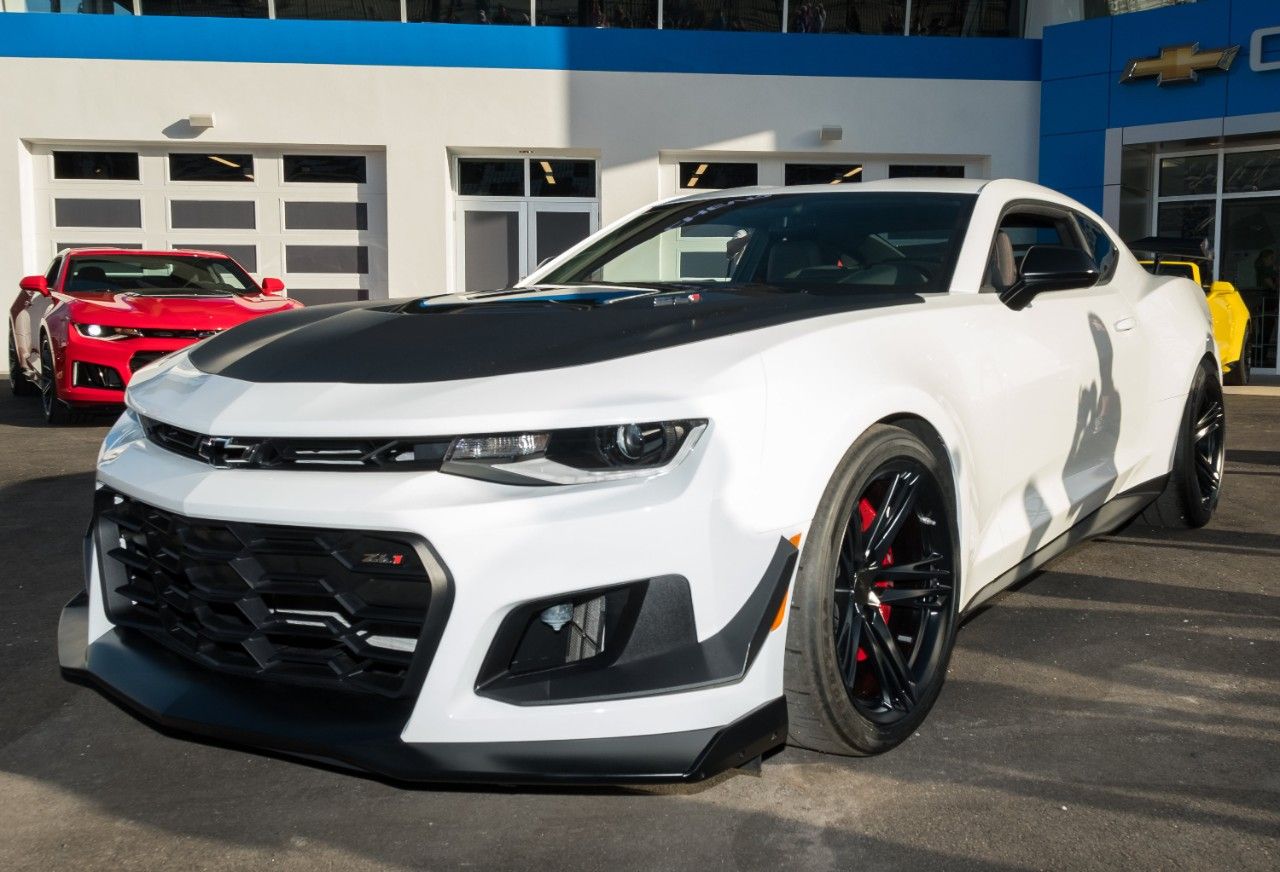
The sixth-generation Chevrolet Camaro was introduced in Detroit on May 16, 2015, and it coincided with the 50th anniversary of the car. Chevy offered the Camaro in LT and SS versions and sat on the GM Alpha platform. Built at Lansing Grand River Assembly in Michigan, more than 70 percent of the Camaro is unique to the car and not shared with any other GM vehicle. Even more, the car weighed in 200 pounds less than previous models. The 2016 Camaro was named "Car of the Year" by Motor Trend.
In the early stages of production, three engine options were available including the 2.0-liter turbocharged inline-four capable of 275-horsepower, a new 3.6-liter V6 capable of 335-horsepower, and the 6.2-liter LT1 V8 engine that produces a pavement-stomping 455-horsepower. The supercharged ZL1 is good for 650-horsepower out of the LT4 (based on Corvette Z06) and is backed by a 6-speed manual or 8-speed automatic. The 2017 ZL1 is shifted via a 6-speed manual or optional 10-speed automatic transmission. Apple CarPlay and Android Auto Capability features are available.
The 1LE performance package made a comeback for the 2017 model with increased track performance and handling. This time, the 1LE is offered in both a V6 and V8 package, and features a distinct black satin hood and unique wheels, etc. The 1LE tops out at 205 miles per hour and completed a Nürburgring Nordschleife lap in 7:16.4.
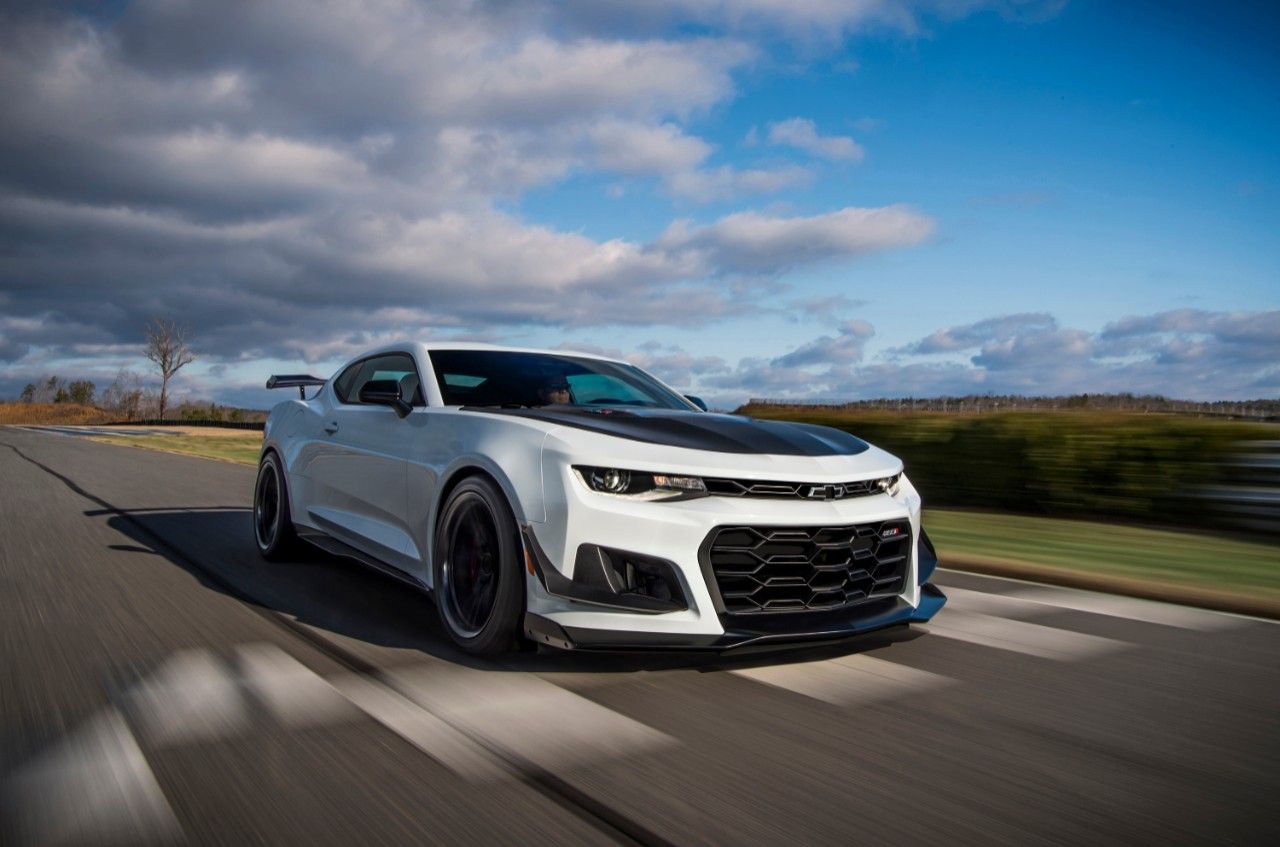
New for 2018 is the even more aggressive ZL1 1LE Camaro package. This track dominating car went three seconds faster on the General Motors' Milford Road Course than the ZL1 Camaro. The car features an improved body for aerodynamics, adjustable race suspension, lightweight forged aluminum wheels wrapped with Goodyear Eagle F1 Supercar 3R tires exclusive to the model. This car shares the same LT4 V8 engine good for 650-horsepower and is shifted via a 6-speed manual transmission with Active Rev Match.
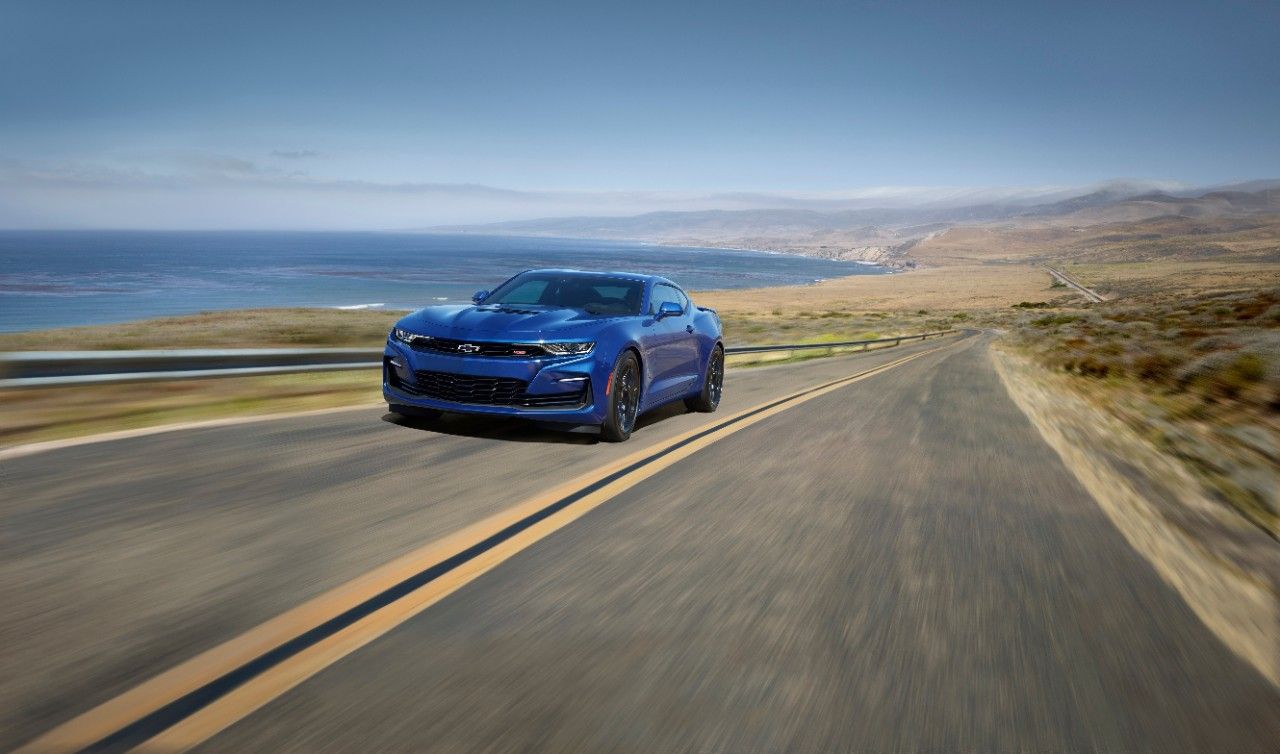
Production
For the Chevy Camaro's initial 1967 model year, a total of 220,906 examples were built including the Z28 and 396-cubic-inch V8 for the high-performance enthusiast. For the 1968 Camaro model year, even more were produced with 235,147 made. The '69 model year proved even more fruitful as 243,085 left the assembly line including the almighty COPO Camaro. After that, numbers declined with just 68,651 Camaros built for the 1972 model year.
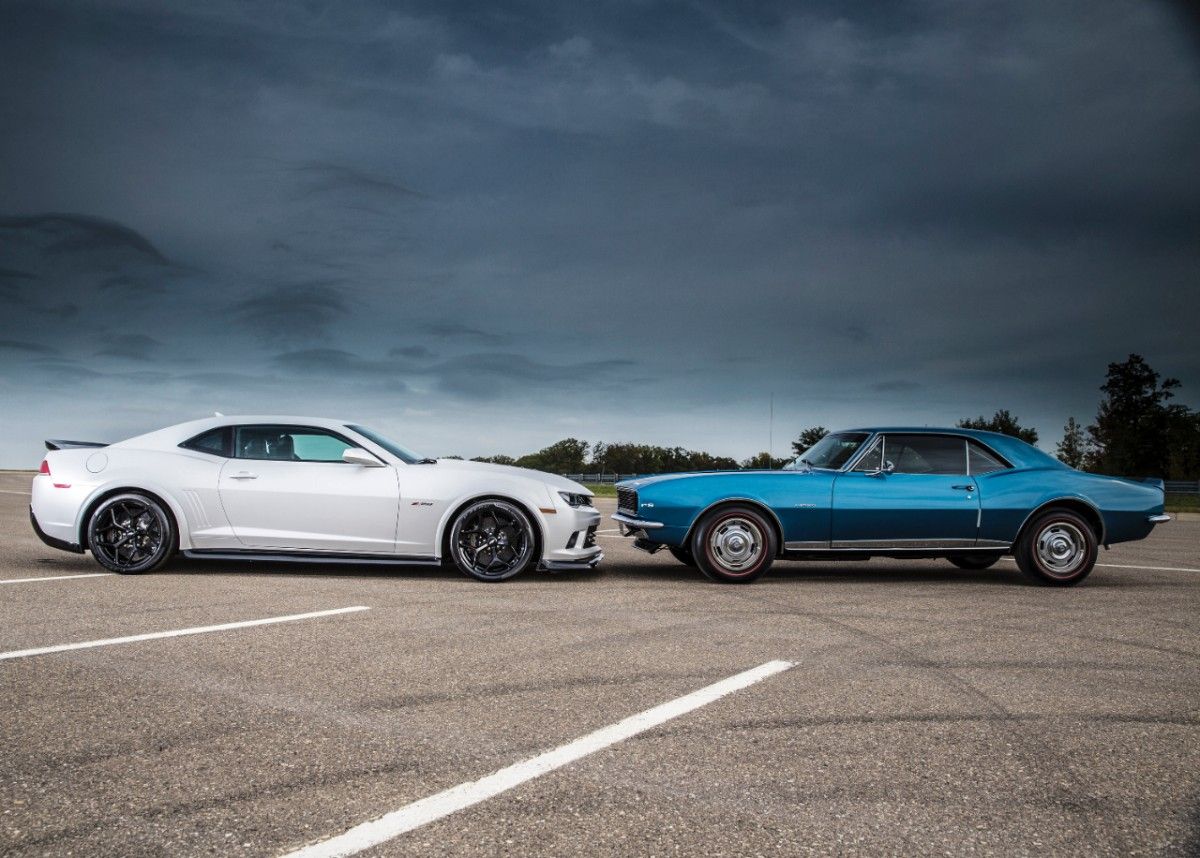
For 1974, Camaro production is bumped up to 151,008 after an exterior makeover. Sales held steady with 145,770 produced for 1975, the same year the Z28 was discontinued. For the first time in history, the 1978 model year surpassed Mustang sales (153k) at 218,853 when the Z28 made a triumphant return. The following 1979 model year, Camaro sales take the lead again with 272,631 units built over the Mustang's 192,410 with the introduction of T-tops, and even more sold the following year. After that, sales declined again with the 1981 Camaro only selling 126,139, the lowest since 1974 production year.
For the third-generation 1982 model year debut, a total of 189,747 Camaros were sold. For the 1984 model year, a total of 261,591 Camaros were produced after Car & Driver named the Z28 the best handling car in the United States. The IROC-Z was introduced in 1985 and a total of 180,018 examples were built. A total of 192,219 units were sold the following year, but after that sales dwindled again with less than 35,000 cars made for the 1990 model year. Sales fluctuate somewhat, and then the debut of the fourth-generation for the 1993 model year only saw 39,103 roll off the line. A total of 119,799 cars were produced in 1994 when the convertible became available again, and just a hair more were sold the following year for 1995. Afterward, sales declined again with only 41,776 sold in 2002, the model's last year until 2010.
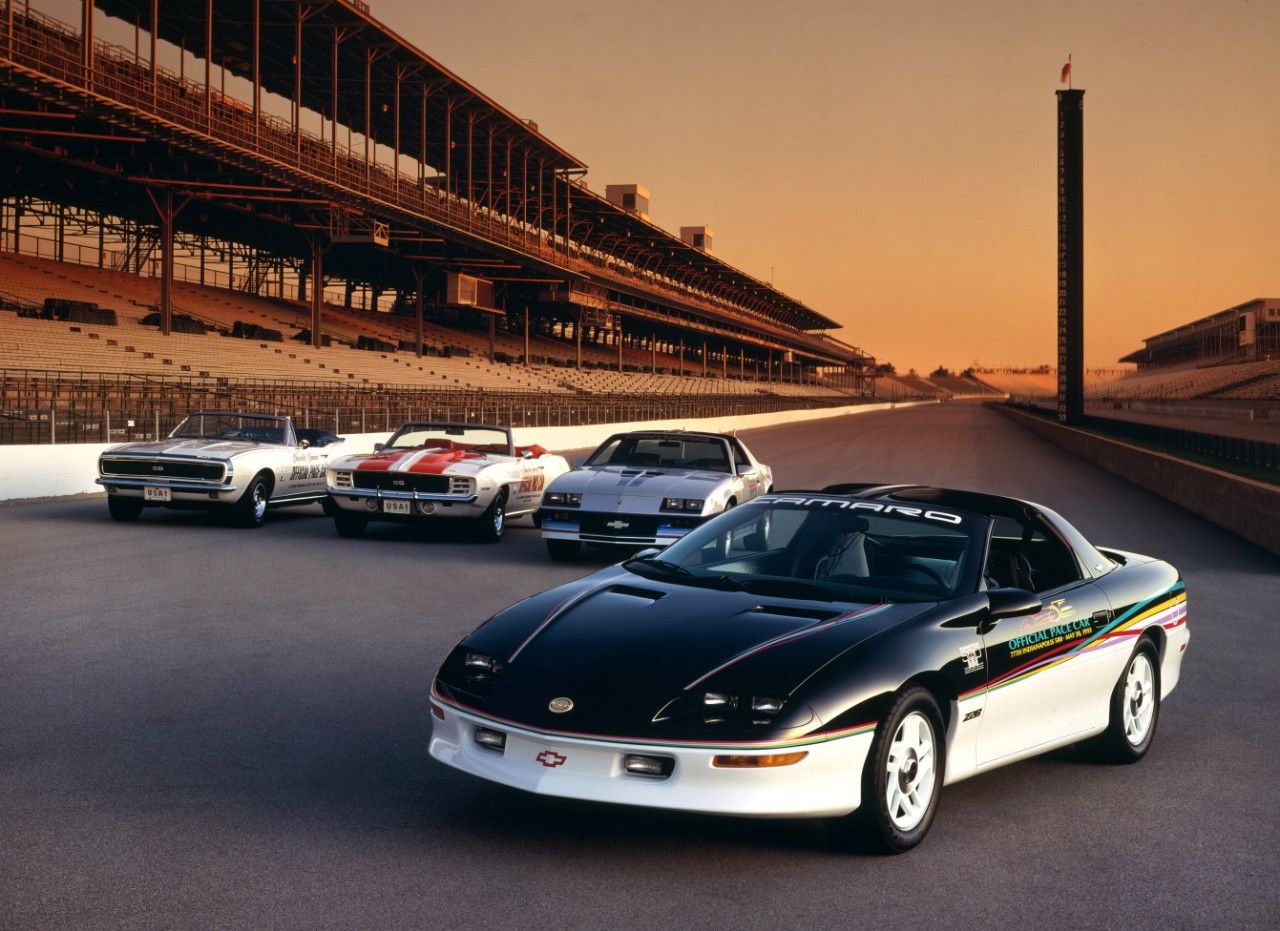
The fifth-generation Camaro was introduced for the 2010 model year and 129,405 units were produced including the high-performance SS model. In 2011, a total of 106,987 were sold. Sales remain somewhat steady through the 2014 year. For the sixth-generation, the 77,502 were sold for the 2015 model year, and 50,963 were sold for 2018. Last year for the 2019 model year, 48,265 Camaros were sold.
A rival to the Mustang, the Chevrolet Camaro saw six generation changes with a brief production hiatus from 2003 through 2009. With big V8 options and more economical six-cylinder options and turbocharged inline-four options, there are plenty of options to choose from when picking factory color, transmission, body style, and more. Even more, plenty of aftermarket companies offer performance and cosmetic parts to customize your Camaro to make it stand apart from the crowd. Despite a brief halt, the Camaro has been around for a long time with no plans stopping. We can't wait to see how the Camaro evolves even more over the next few generations.
About the Knowledge Base
The Motorious Knowledge Base provides comprehensive vehicle overviews for Classic & Collector Cars including production numbers, performance specs, factory colors, and OEM brochures. Check out related content linked to this article or view other Makes and Models in our Research center.
If you have any interesting facts about the Chevrolet Camaro to add, want to tell us how we did covering the Mustang, or want to tell us about yours, please leave a comment below.


